
This robe (gown) design is based on the information seen in the prior Fashion History Page plus our own knowledge and research. We quickly determined the year as 1785, with fashion features typical for that decade. We also determined this to be a round robe a l’anglaise with some variations:
- angle of cut of bodice is straight, not angled as typical of the period
- back has a long and tapered back more typical of the 1760’s-70’s “en forreau”
- bodice is LOW typical of the later period
- use of the wool tweed and design is typical of the Highlands; not so much the Colonies (directs length of skirt, fullness of pleating, whether pleating or gathers used, and overall “look” plus the integration of the plaid or arasaide in the design)
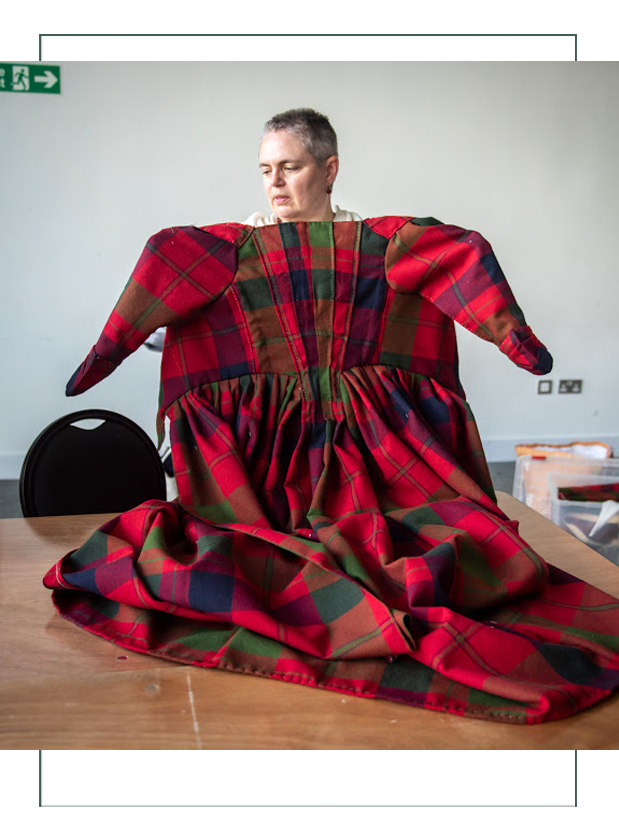
=================================
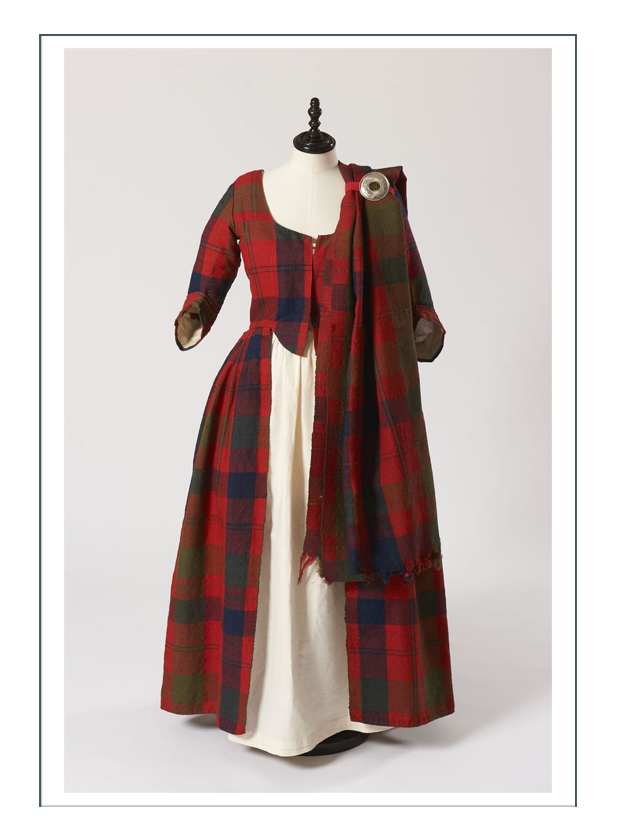
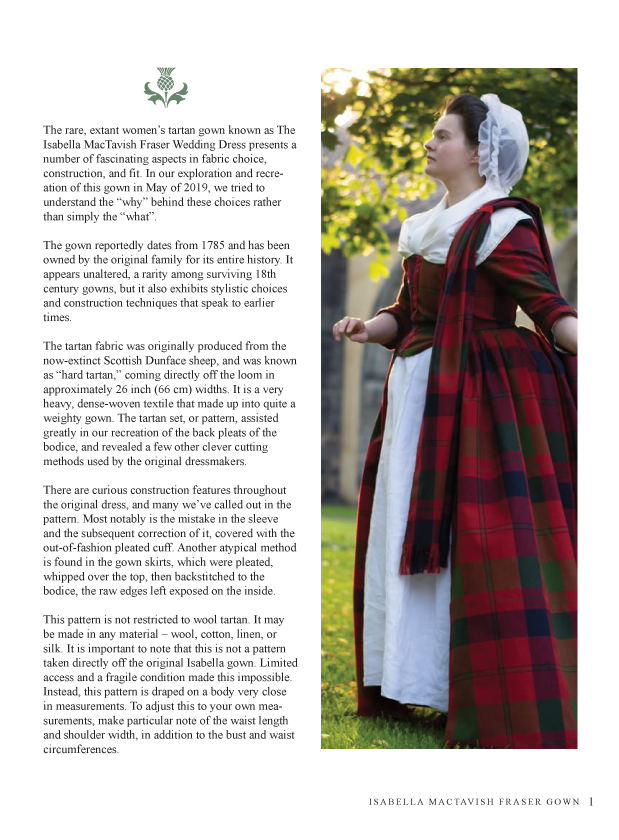
Our Interpretation and Objectives
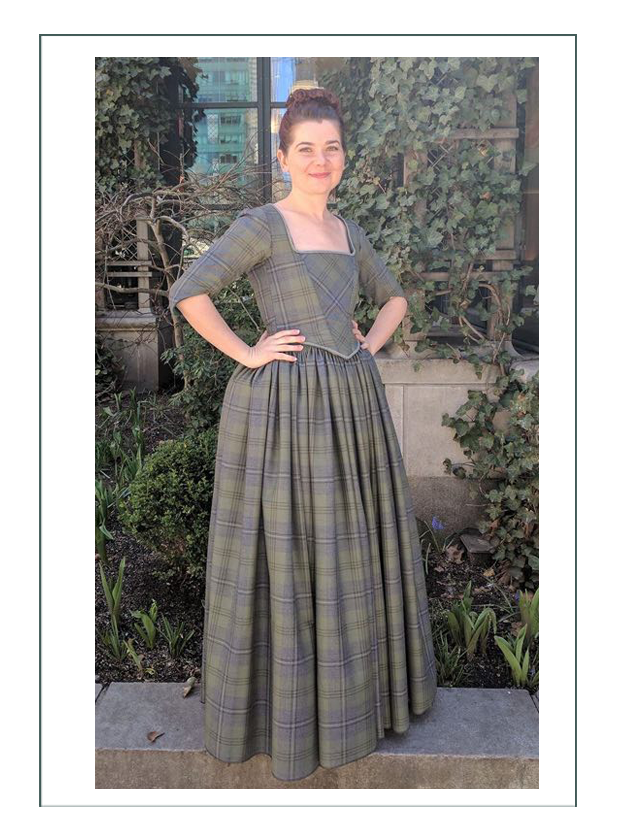
The first thing Susan decided was to make this a “closed robe”, where the fabric would go all around and no petticoat would show. This was for two reasons:
1) She wanted a gown like that worn in “Outlander” more than actually reproducing the MacTavish gown;
2) She already has had us make open robes, and wanted the full skirt “look”
Also, all her other earlier depictions included visible stomachers. She wanted the closed bodice for this one for variation.
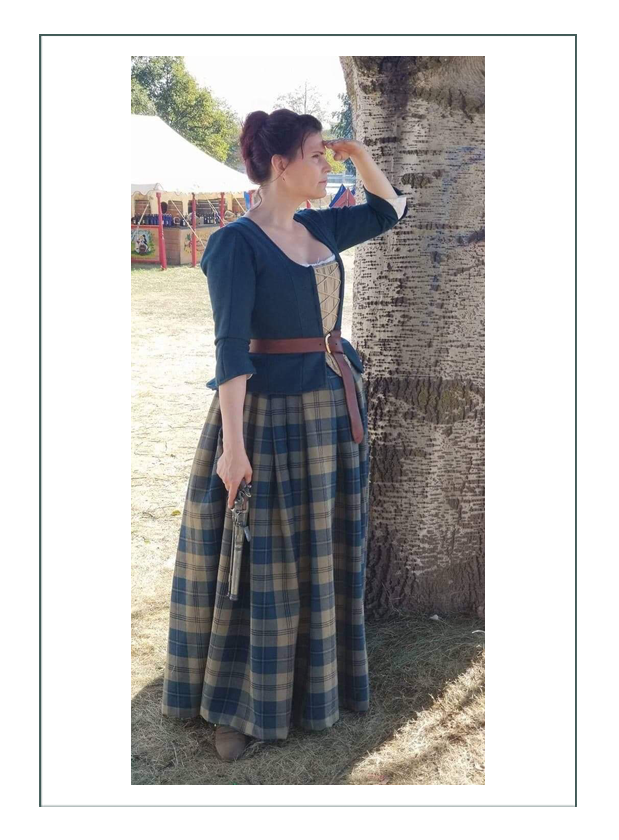
NOTES:
The 1785 McTavish gown was 1785 modern in front and 1765-70 in back. The mantua maker had little time to make it, so apprentices did it – pleating was amateur say historians, and they messed up on the sleeves. She couldn’t bend her arm, so the seamstress cut off the sleeves and stuck on a cuff. The cuff was like a small version of the 1765 winged cuff.
So it is a hodgepodge of 18th century designs and ideas, and made for a big woman.
We will develop a Round Gown based on the MacTavish & example above to be typical to the early 1780’s which is suitable for:
- Informal
- Working Class
- Early bodice with tapered center front
- pinned front closure -meets (or overlaps) in the middle
- closed robe – no seenig the petticoat
- wear with bum roll for dress up
- 3/4 sleeves no cuff
- floor length skirt
- seaming as per gown correct (not earlier style as the McTavish gown)
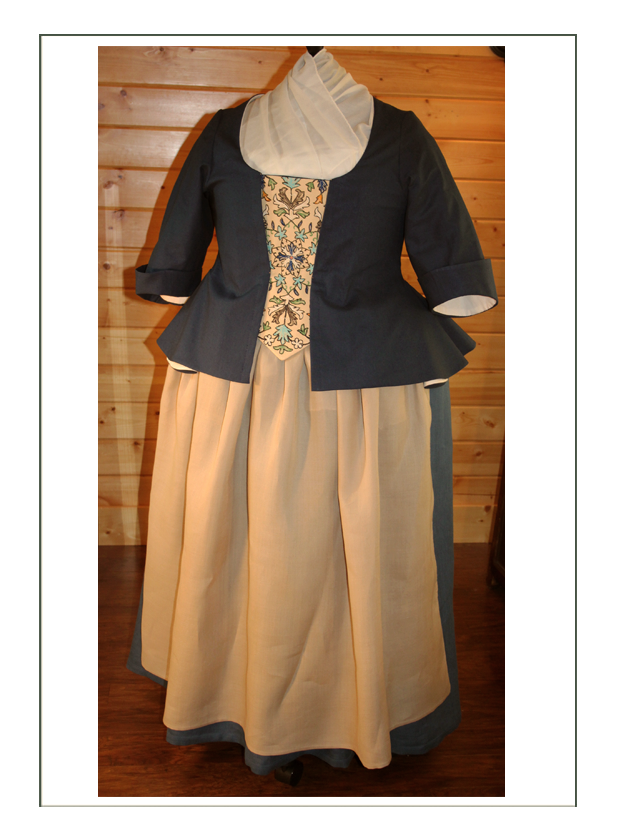

Round gowns to Understand Construction and Design
These are the key photos we used in determining the “mixed bag” of techniques for seaming, sleeves, shoulders, neckline, back configuration, pleating, and details of the project – since we weren’t exactly building one thing, but changing it a bit to suit personal tastes – just like Isabelle did.
Many of these are “open robes”, meaning there is a separate petticoat which shows under a bodice with attached skirt. Even though the petticoat was the same fabric, it was still “open”. This is the easy way to construct, because there is no need to determine the intersection of the overlap.
We were looking for examples with the scooped below waist “U” shape of the MacTavish and favorite examples, especially to study if it was symmetrical after closure. Some were and some were not; most were not and the shape varied.
Those which do not show and overlap are “closed robes”, and are the examples for our construction detailing. Almost every photo for some reason covers up the transitional “gap” where a front “bib apron” is pulled up beneath the front of the bodice. It took quite a bit of research and trial and error on the final project to get that to be neat and also in the correct position to allow the slits for hands to reach into the pockets.
One can see a great variation in trim, method of closure, and front design, but very little variation really in the construction of the bodice and skirt.
The second difficult trick is in working with plaid, beyond the obvious matching of plaids in both directions on a large skirt, but in getting an overlapping bodice to match the plaid. After completing Susan’s bodice, we had to salute the mantua-maker of Isabelle’s gown for figuring out that changing the fashion of the day from having the front grain at an angle to being straight up and down, made the matching and meeting of plaids a whole lot better!
When you see our finished bodice, pay particular attention to that the plaid matches in ALL directions. The even greater challenge though, was to make this fit without a mockup or without a fitting on Susan at any point in the project as we worked on a sculpted dressmaking dummy. Especially challenging was that the dummy has no arms or shoulders, so that was done mathematically.
With the help of these examples of real 1780’s dresses below, we were able to understand the crossovers, fitting, pleating or gathers, lengths, tapers, and methods of closures accurate to a project of this sort:
Open Robes
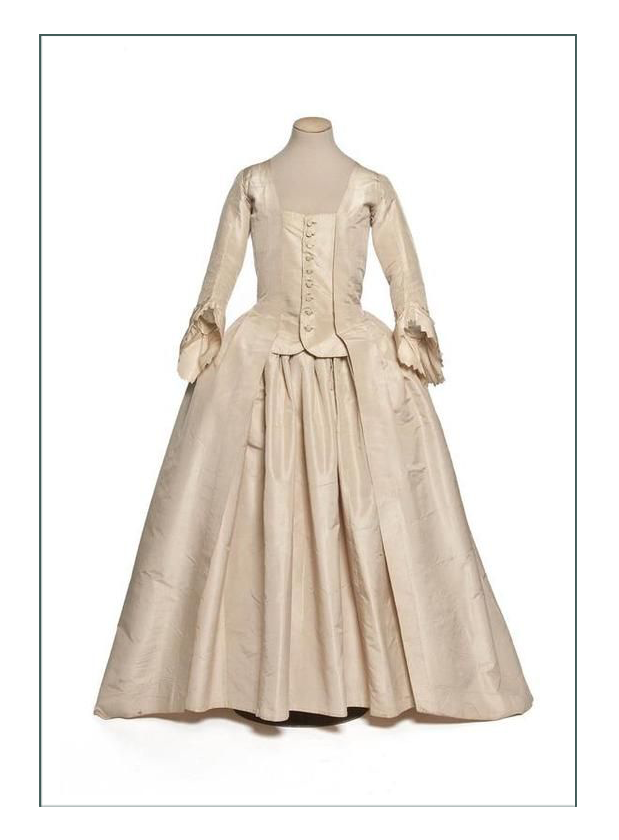
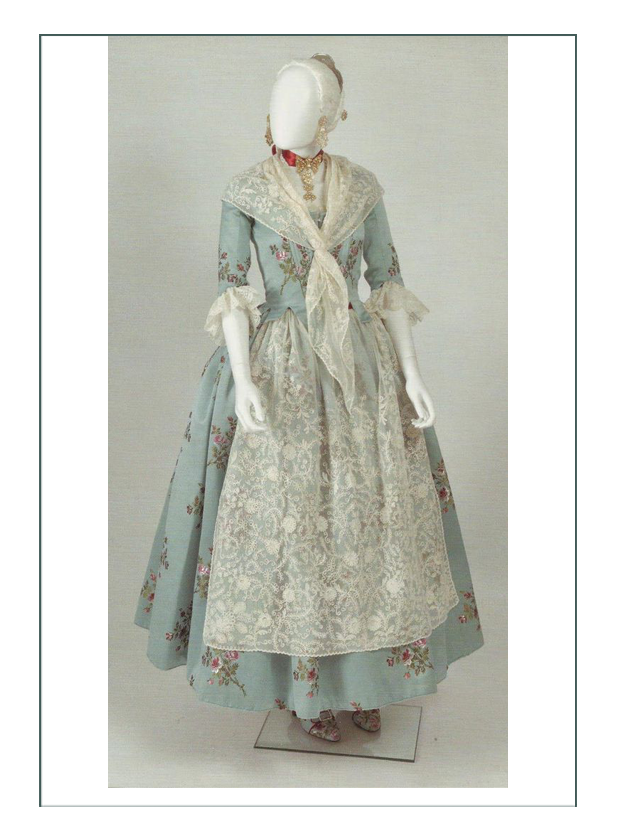
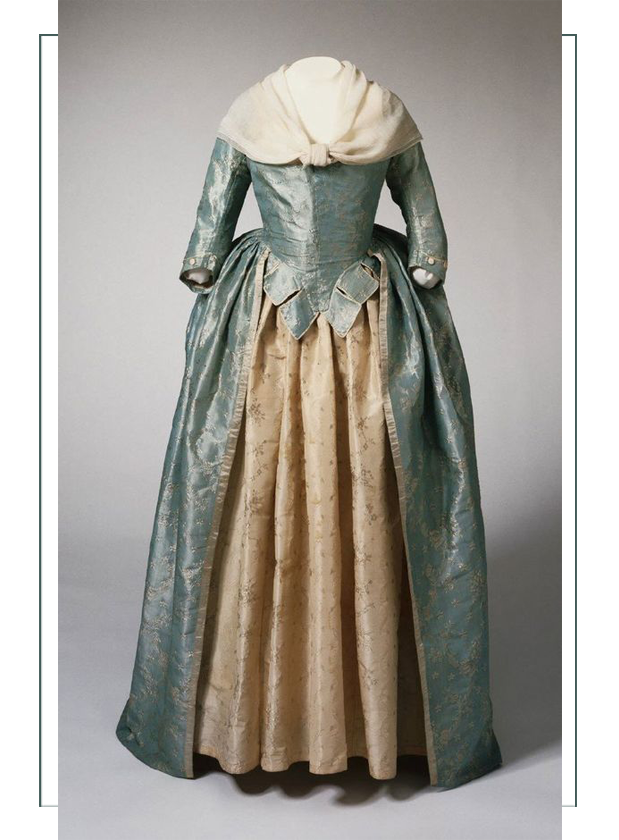
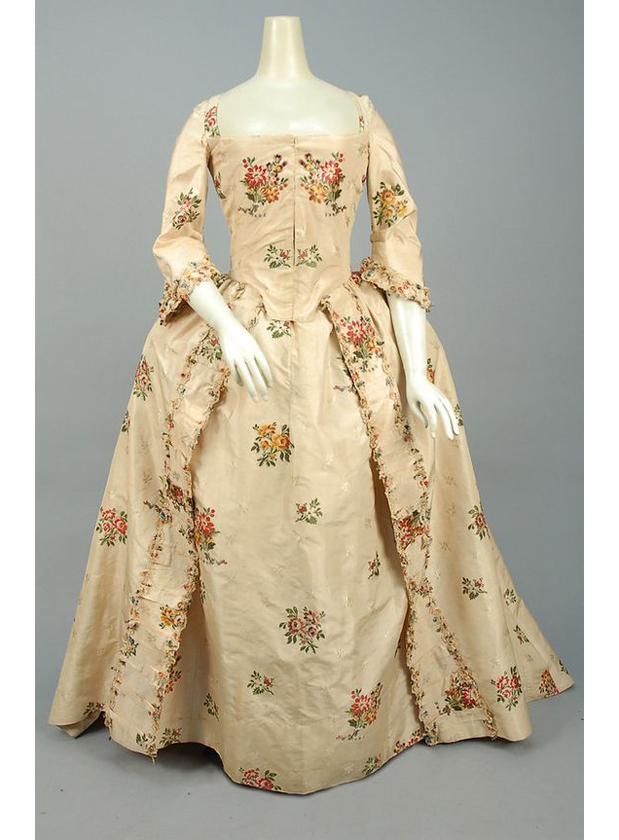
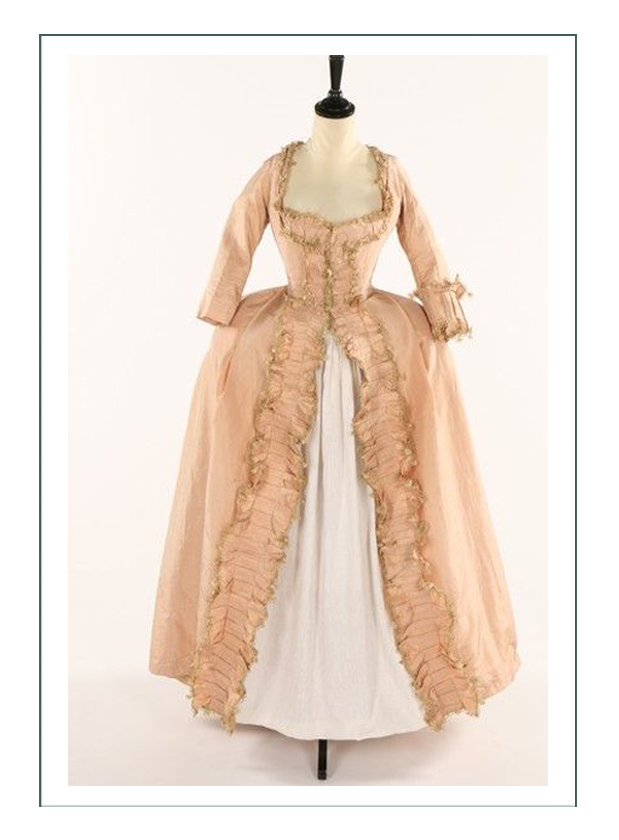
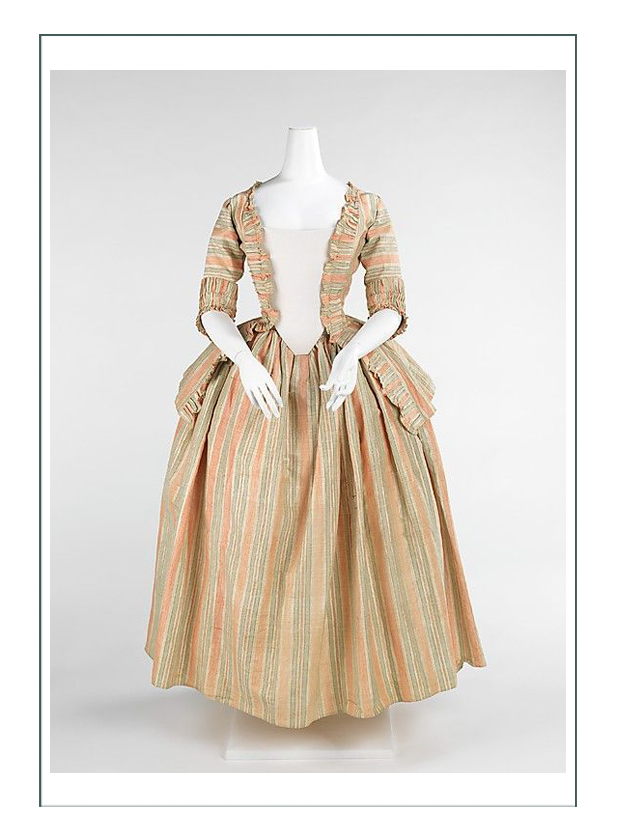
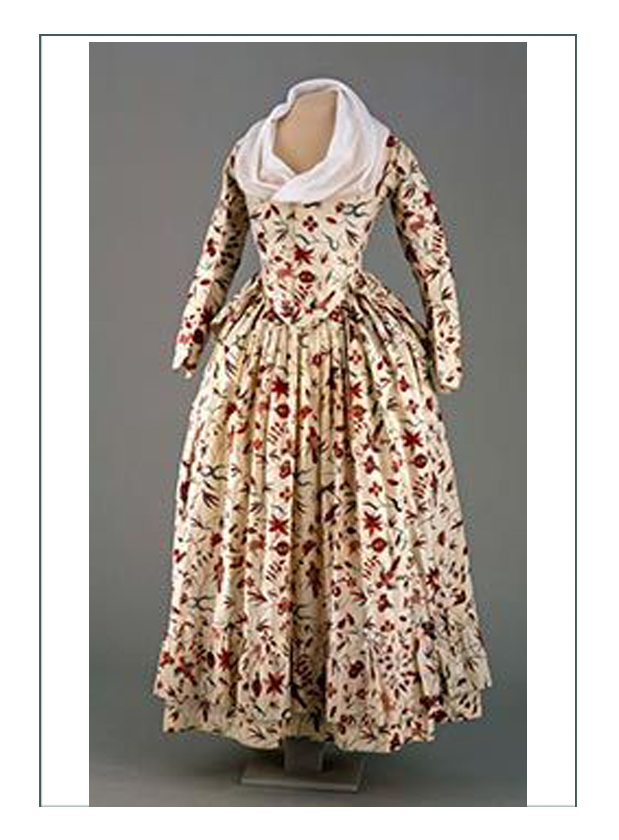
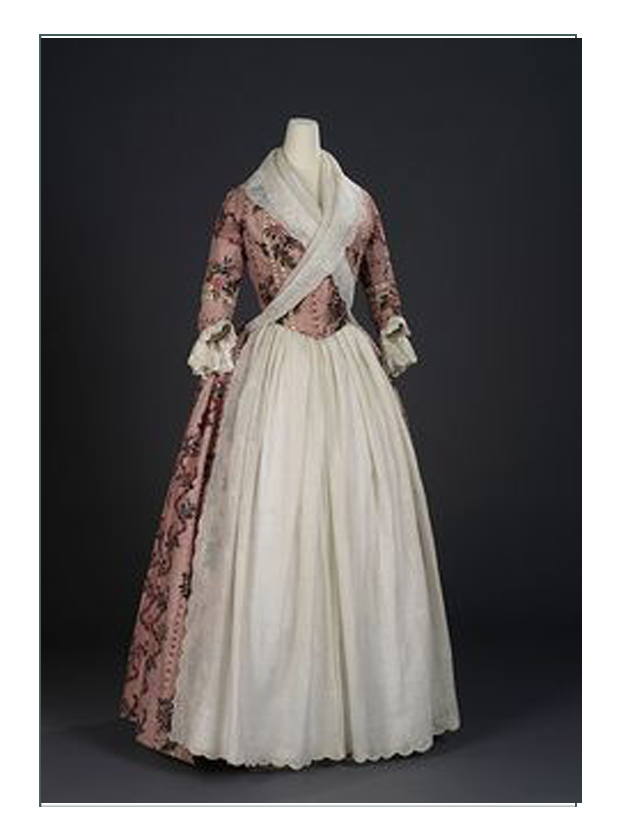
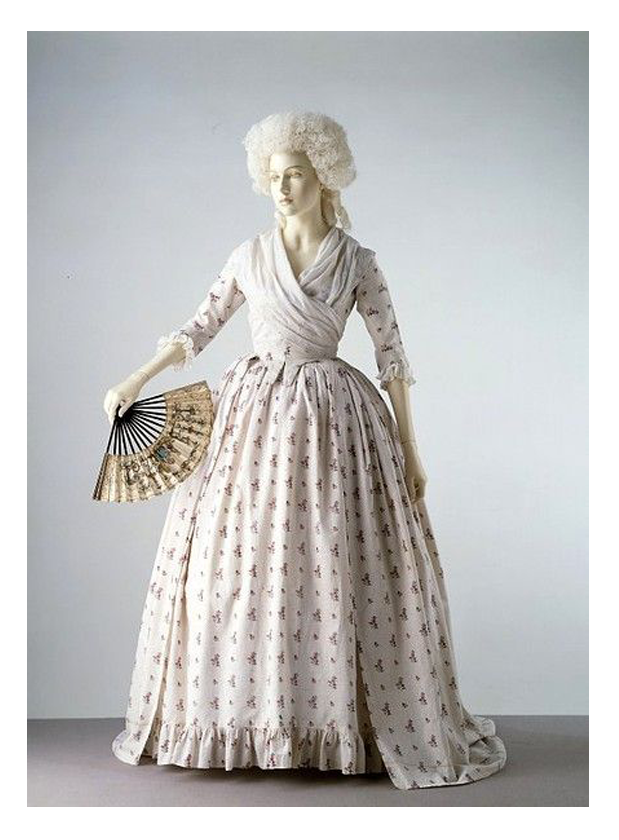
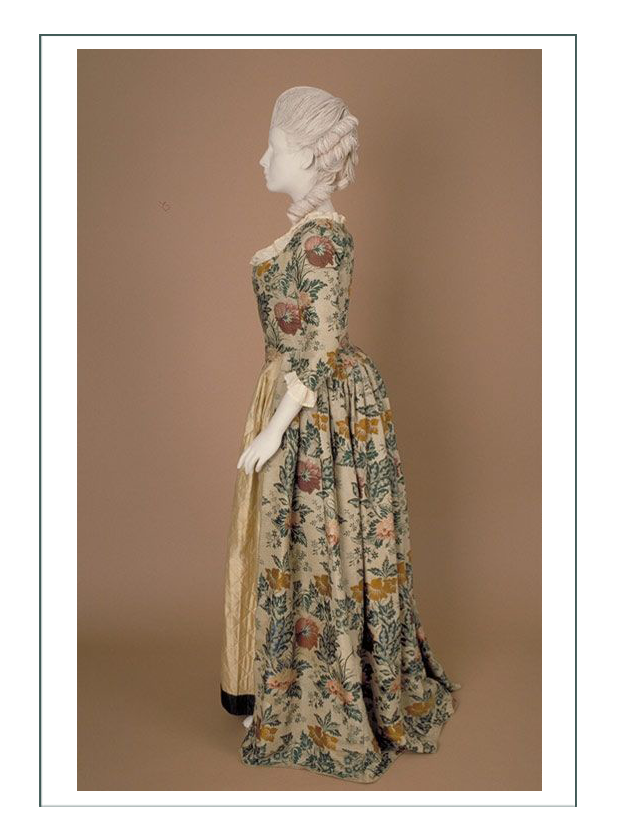
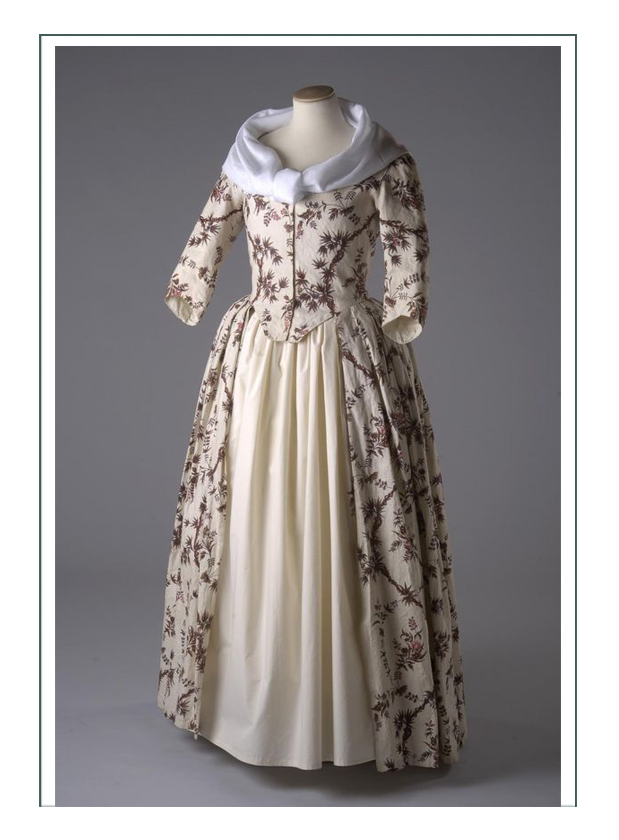
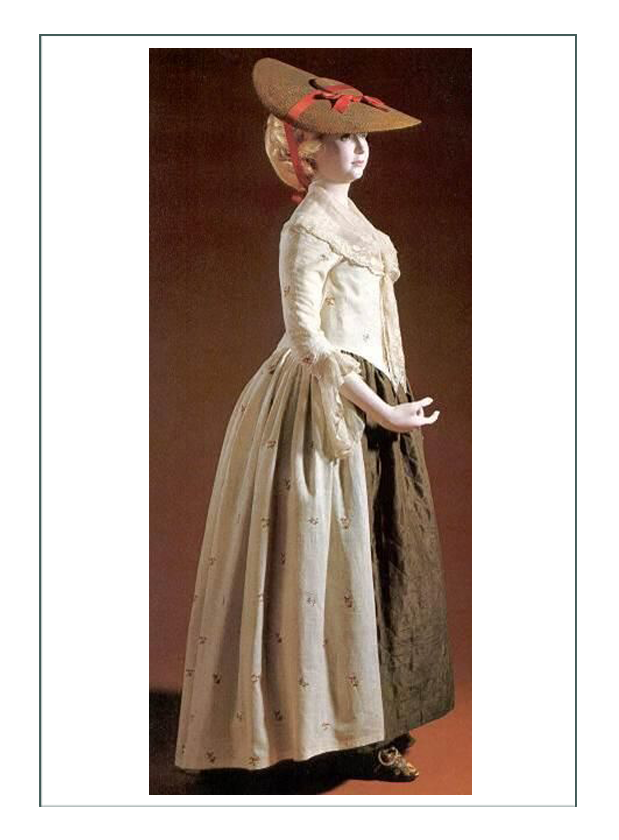
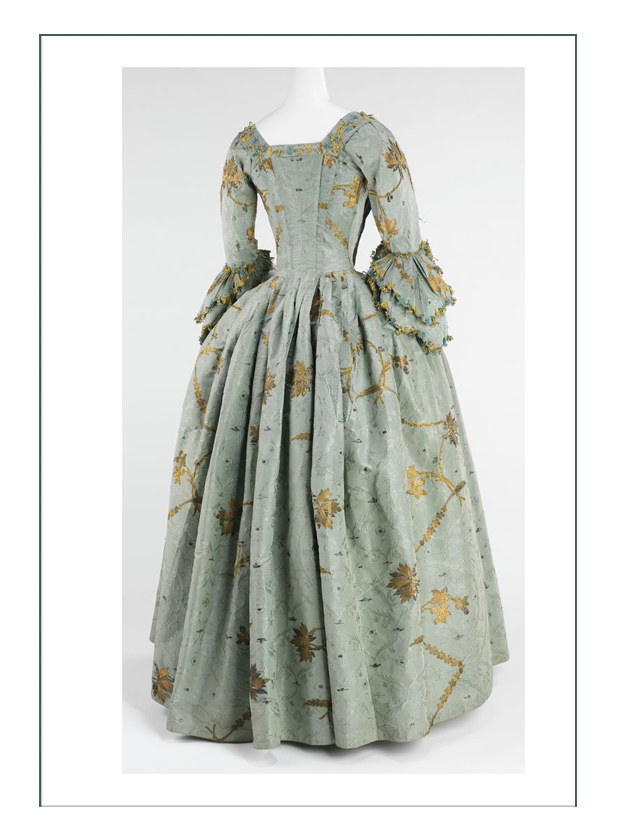
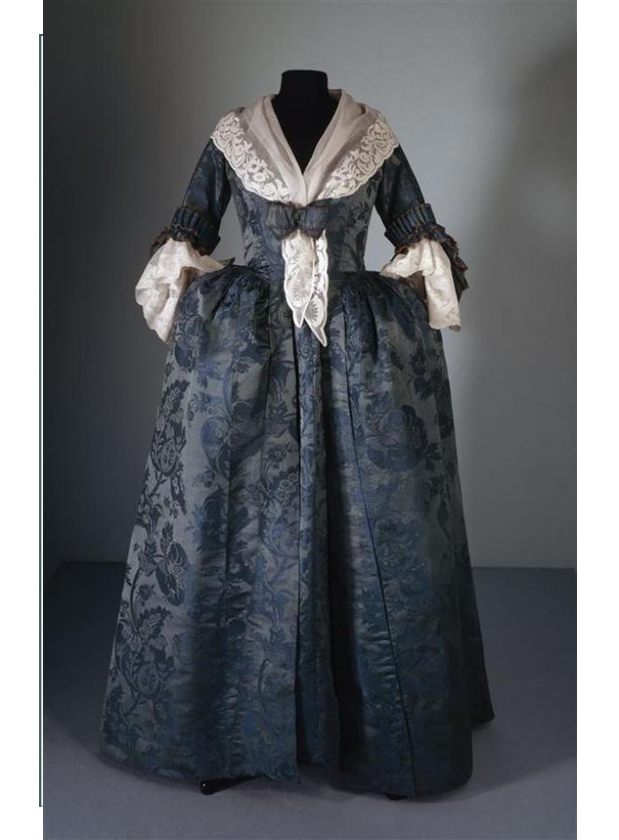
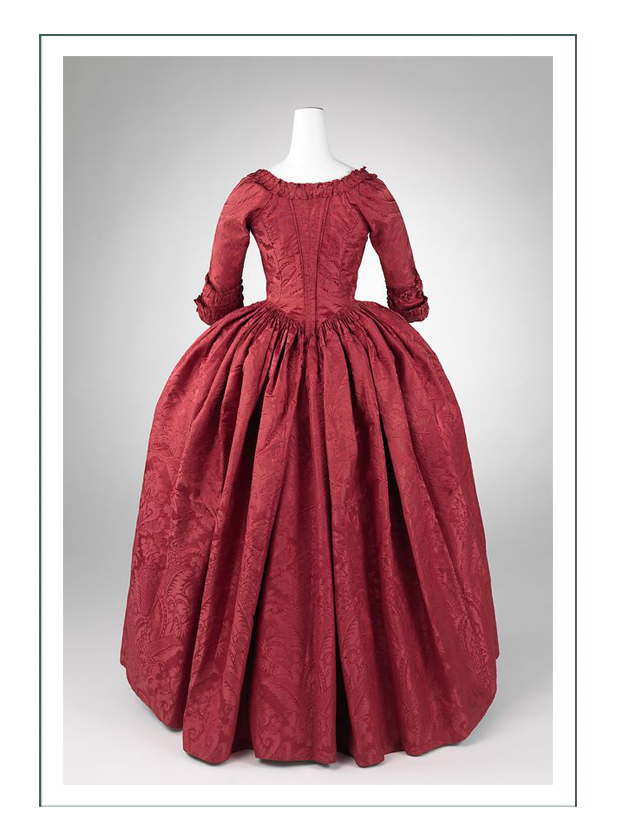
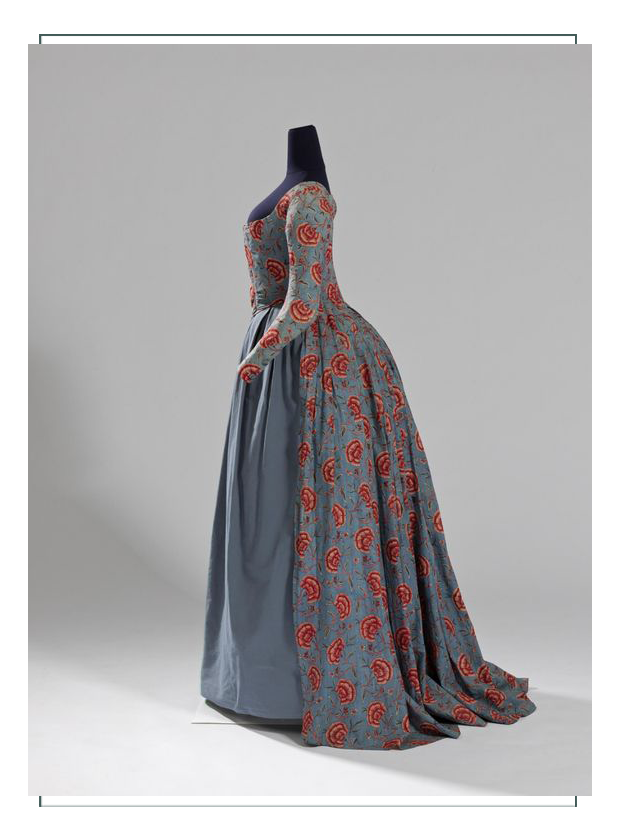

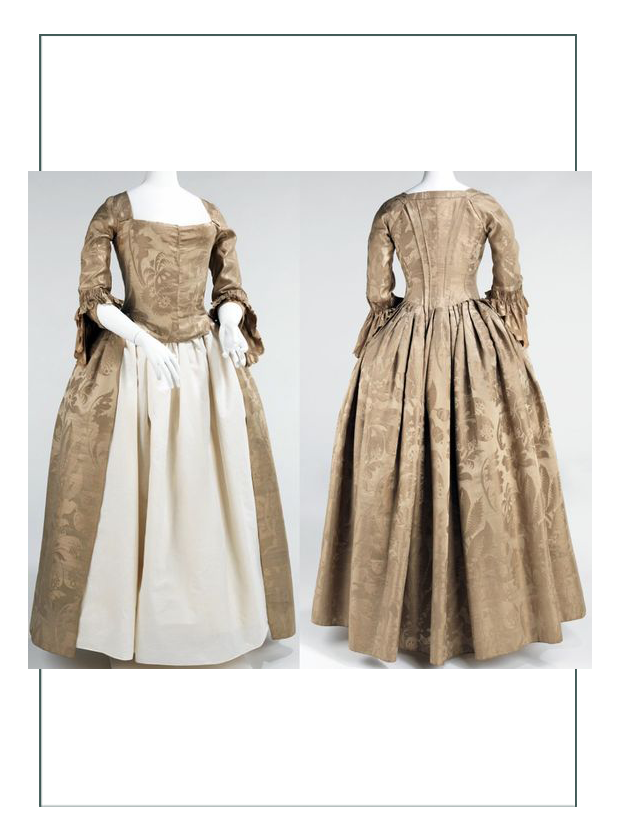
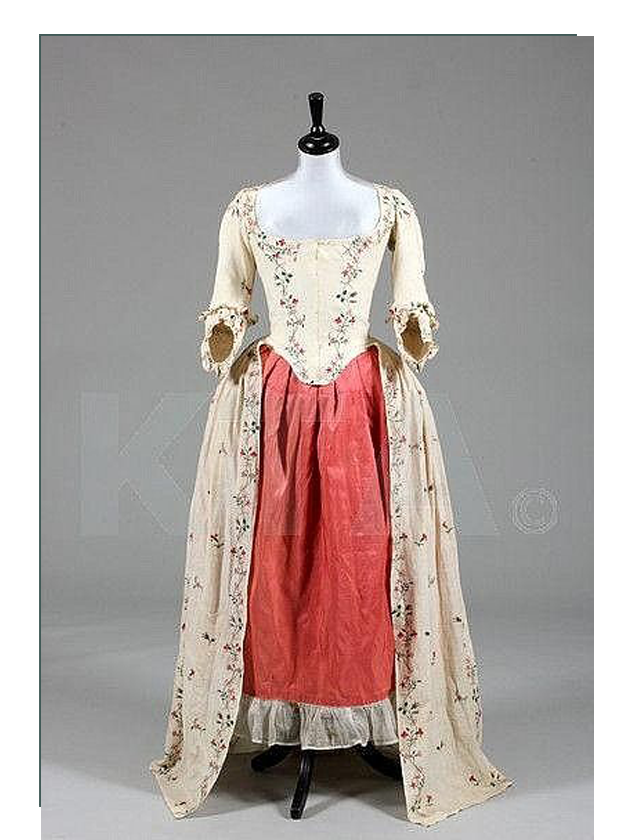
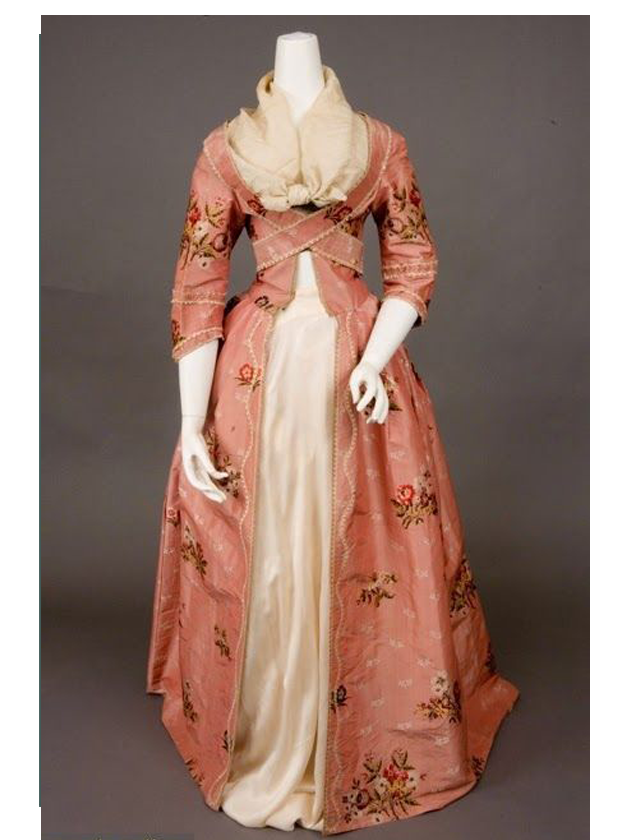
The Closed Robes like Susan’s
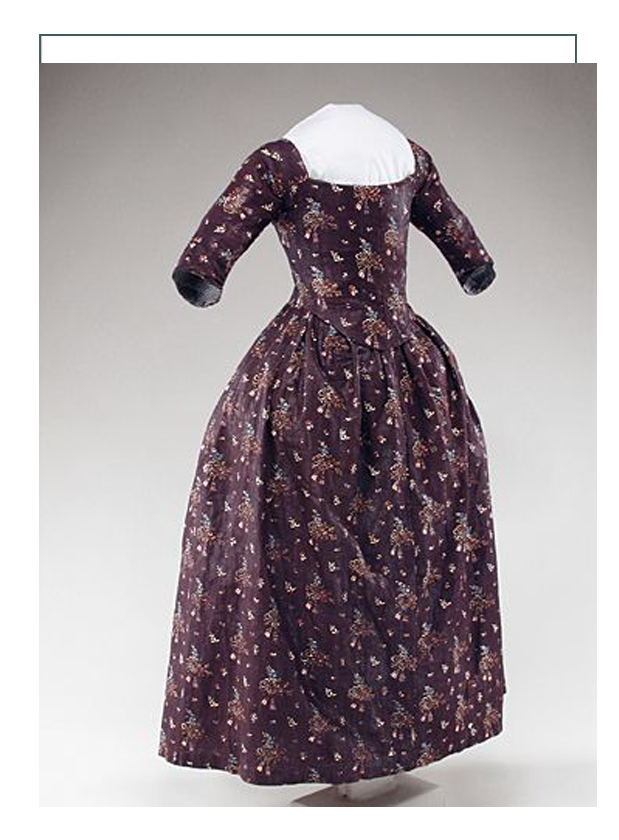
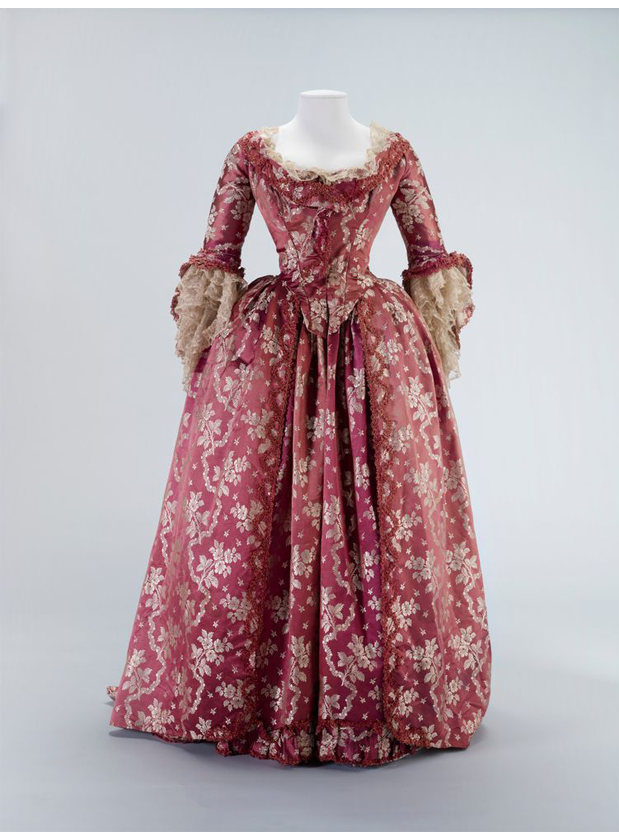
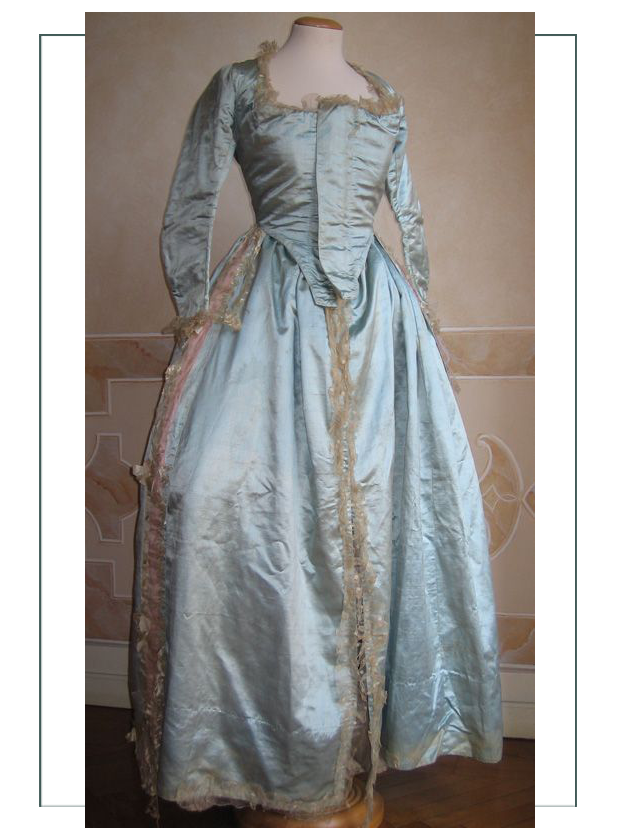
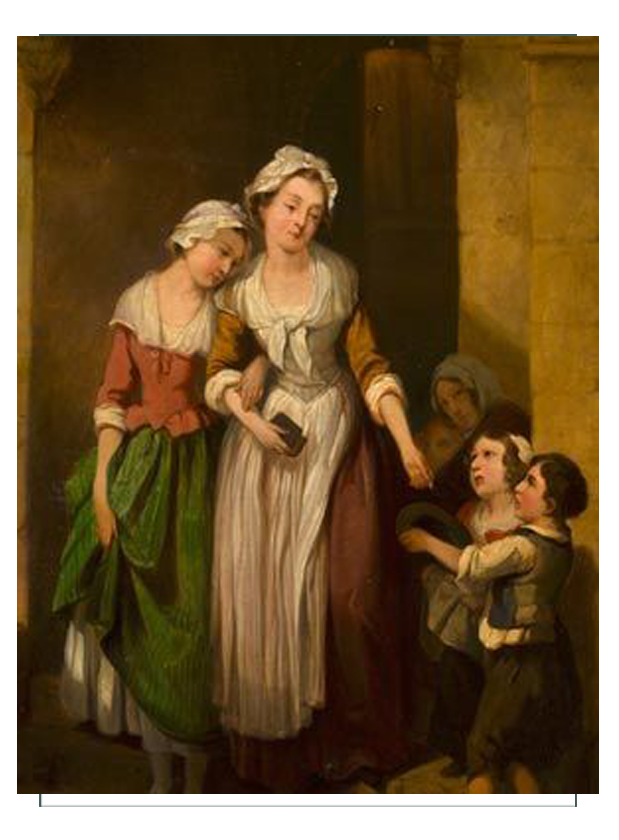

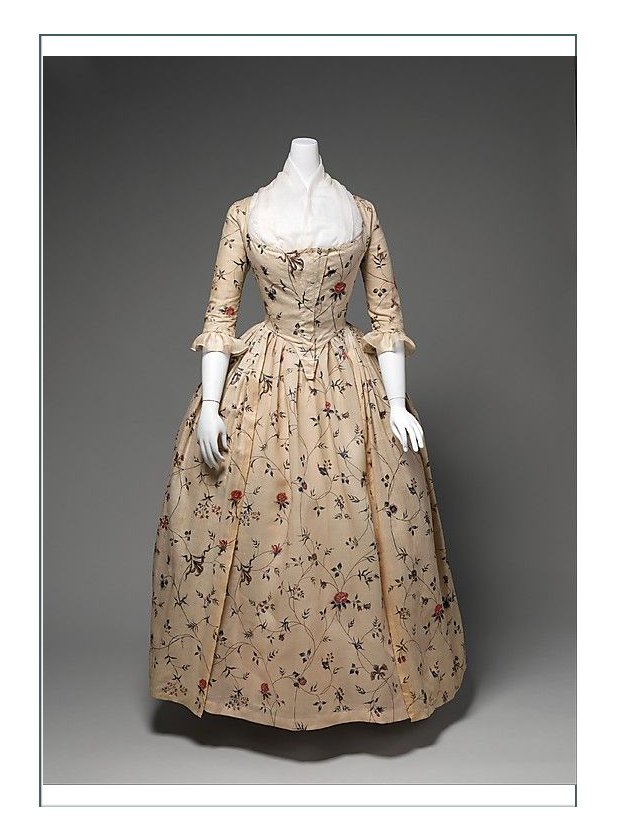
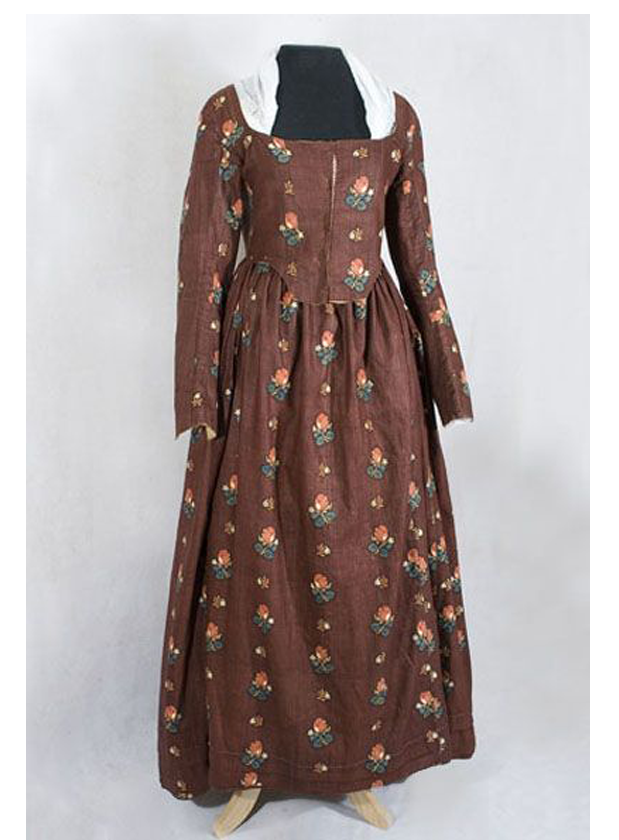
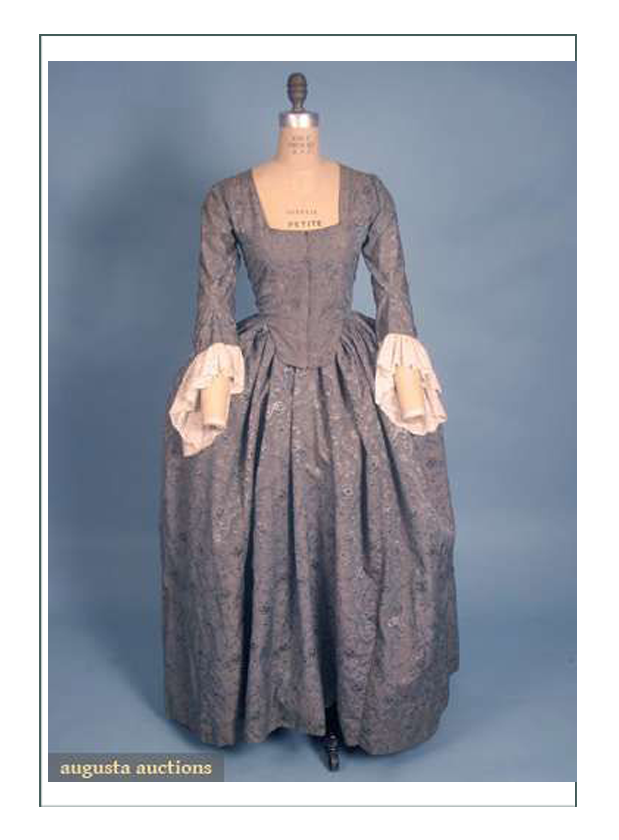
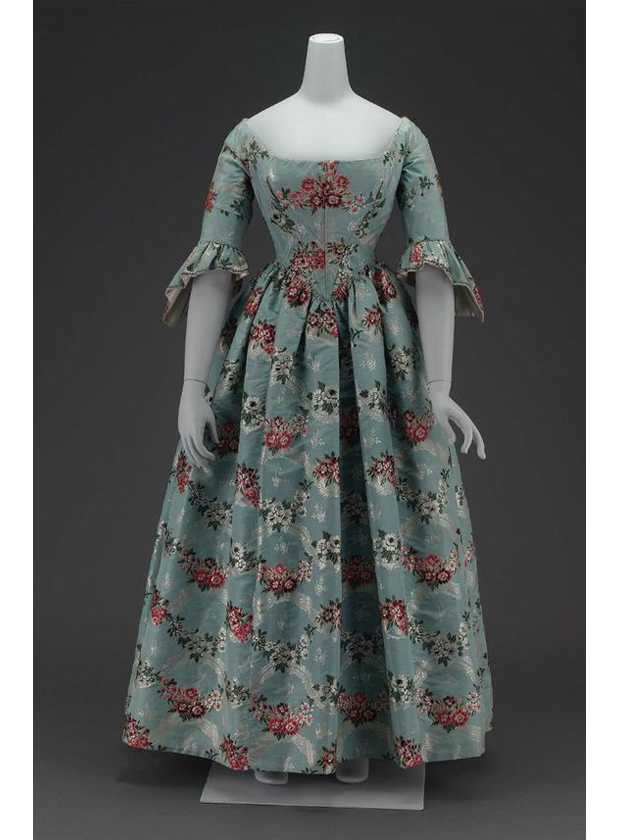
The MacTavish-Fraser Gown
It must be noted all the gowns above are French or English. The Highlanders and Colonials varied from those depending on location, availability of textiles, and function. The Highlanders and Colonials had more priority on function, and much variation in type of fabric and construction due to climate.
While the MacTavish wedding gown might seem rather casual and functional compared to a French Court gown of the same date, considering the Highland climate and that this was a winter wedding, it makes sense. Those churches could get cold.
So once again, decisions and our design was and is based on: what women could afford, get, knew about, liked.. and we add “were doing in it”. Susan will be wearing hers to re-enactments in the Dakotas, and possibly in her own southern state, though it’s more likely she will wear her linen there.
(A few pages from the MacTavish pattern project, and very similar extant examples)

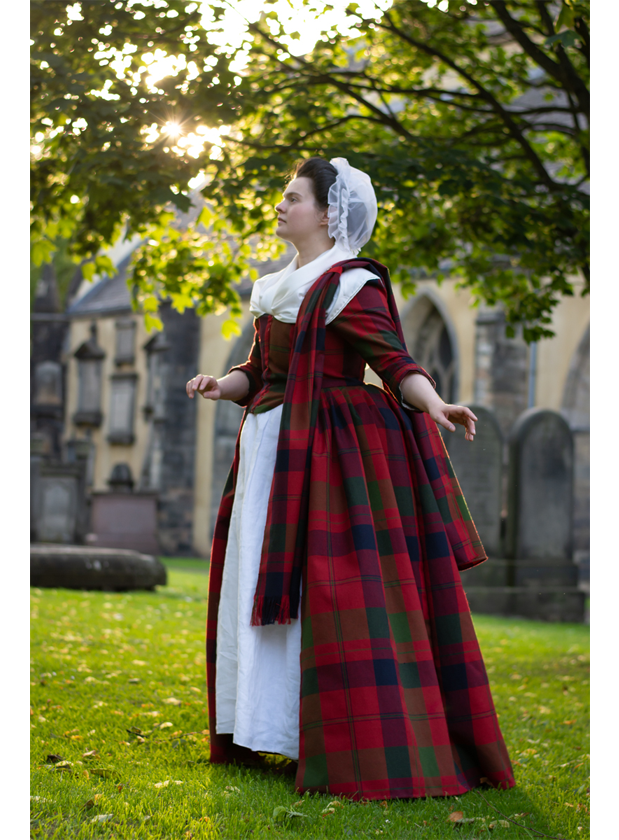
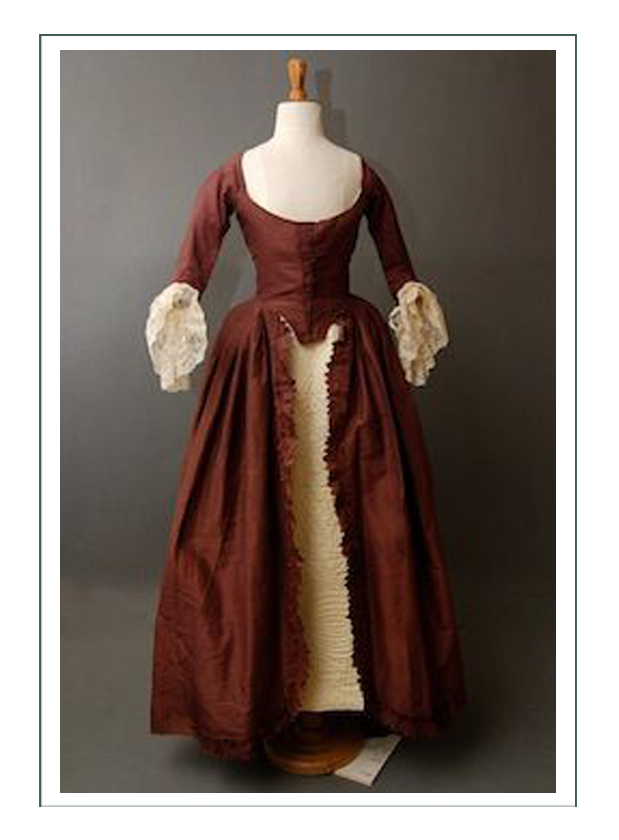
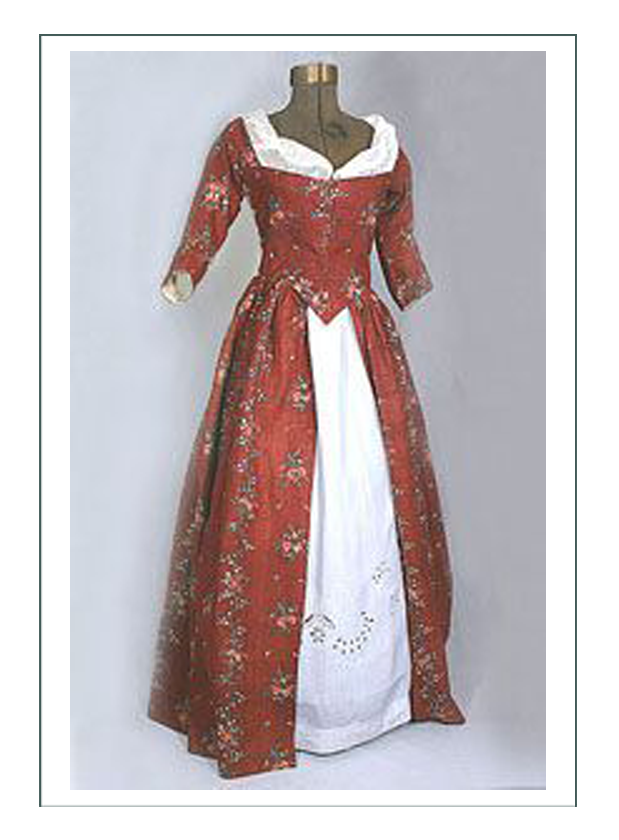
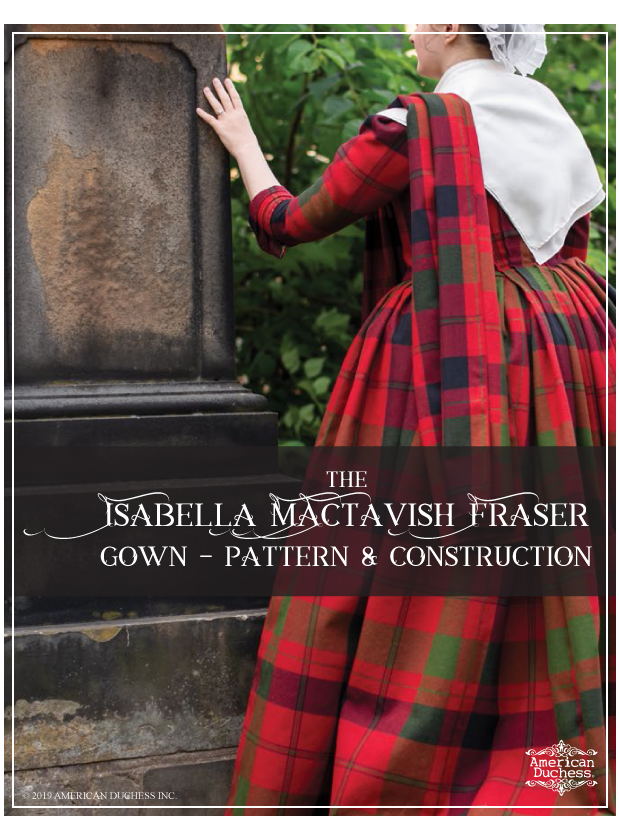
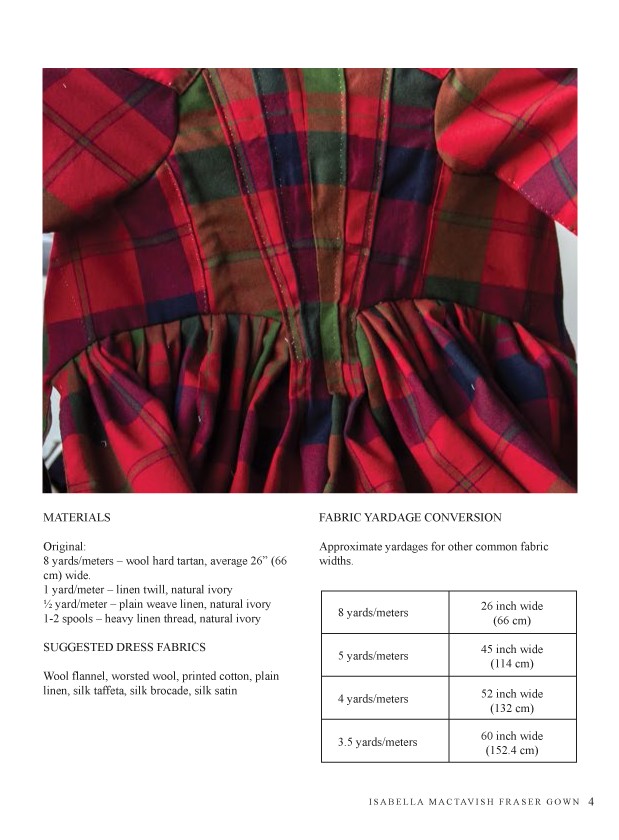
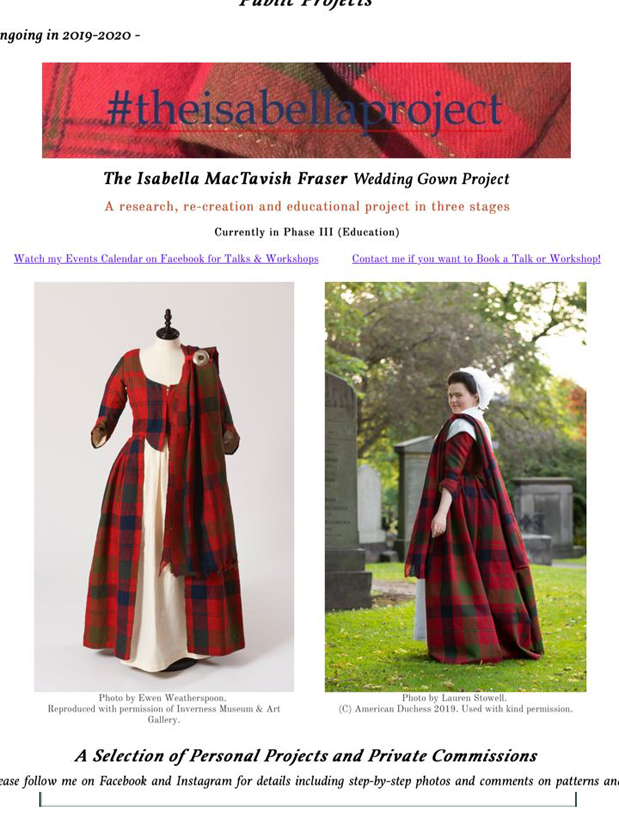
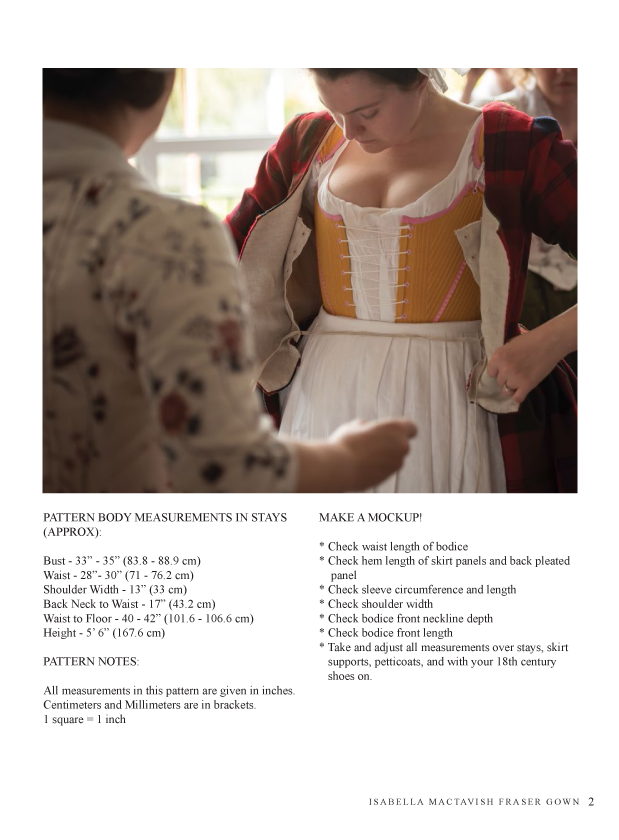

Click here to go to Susan’s 1785 Main Page with the Finished Project (next)
Click here to go to Susan’s 1785 Historical and Fashion Context Page
Click here to go to Susan’s 1785 Fashion History with the MacTavish videos Page
Click here to go to the top of this page
